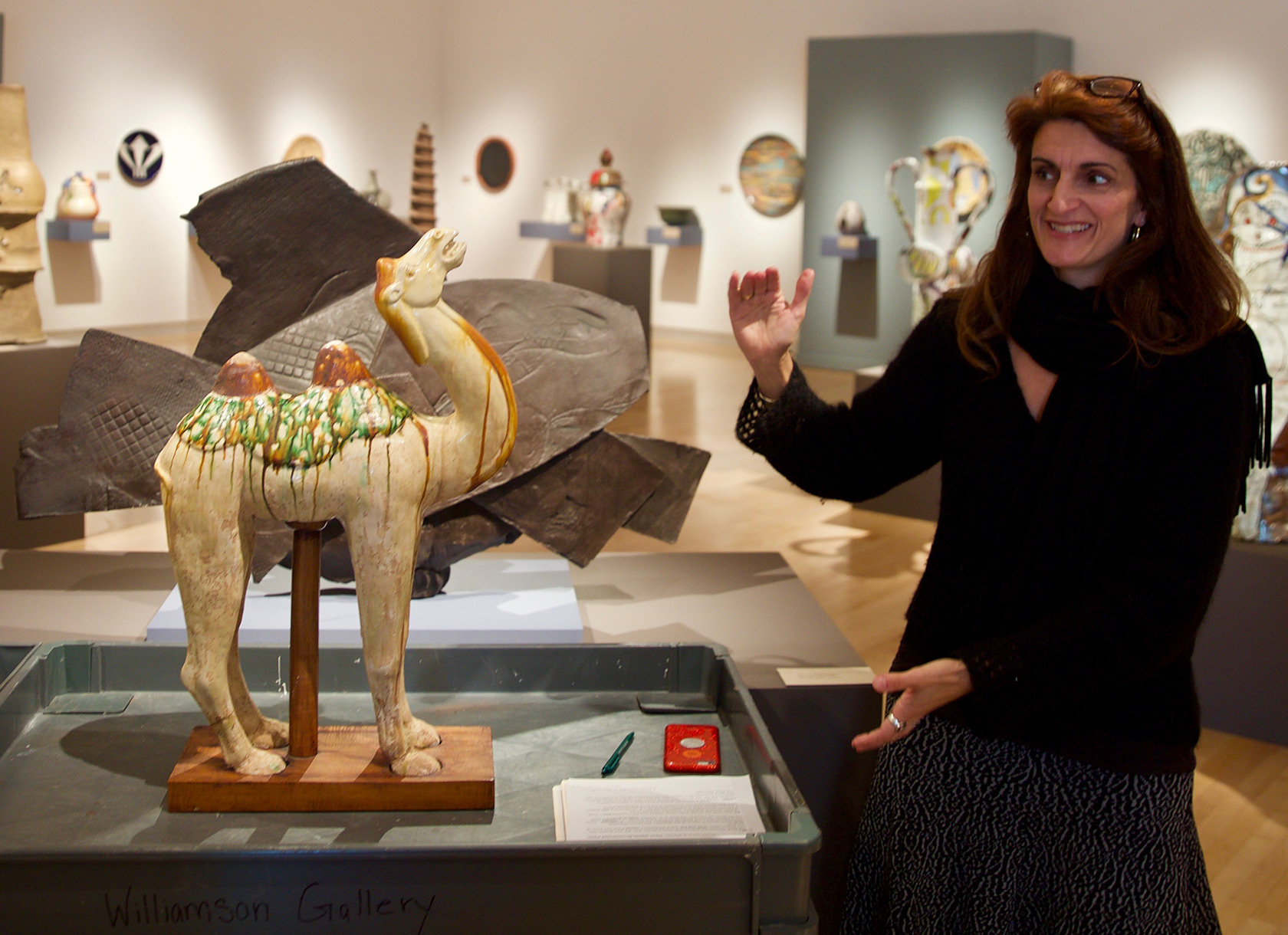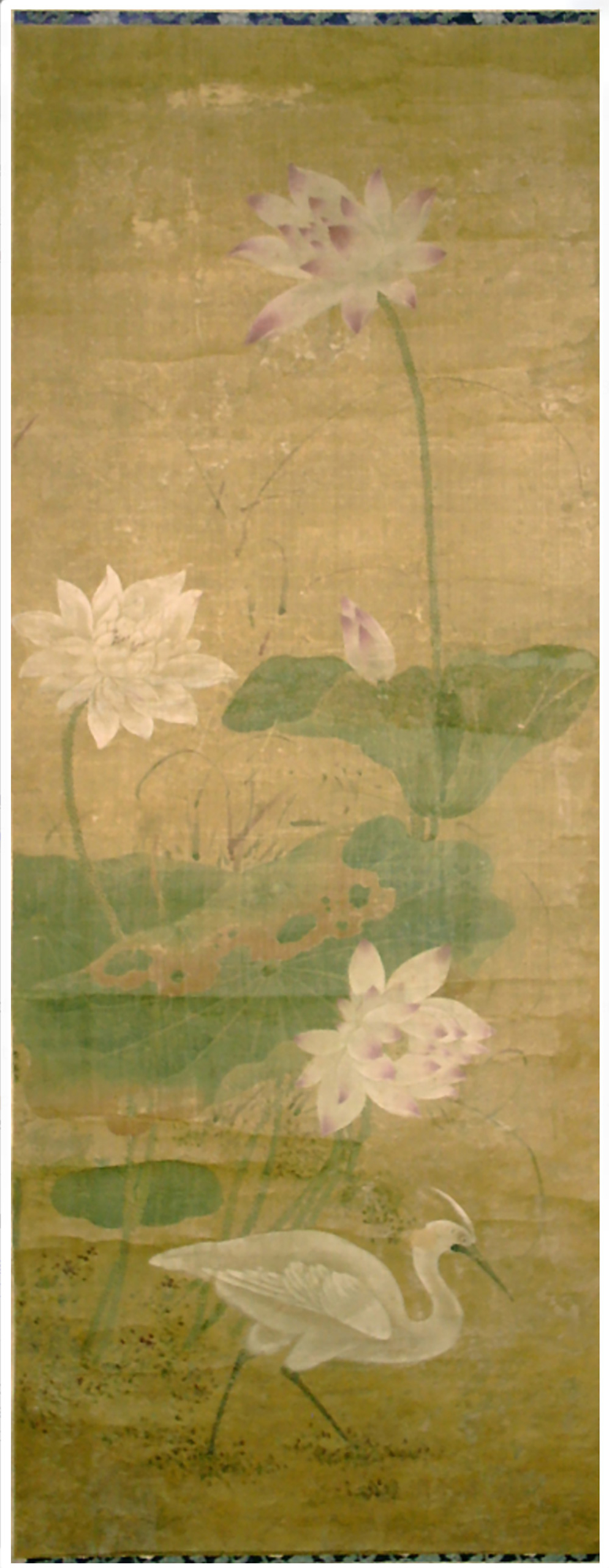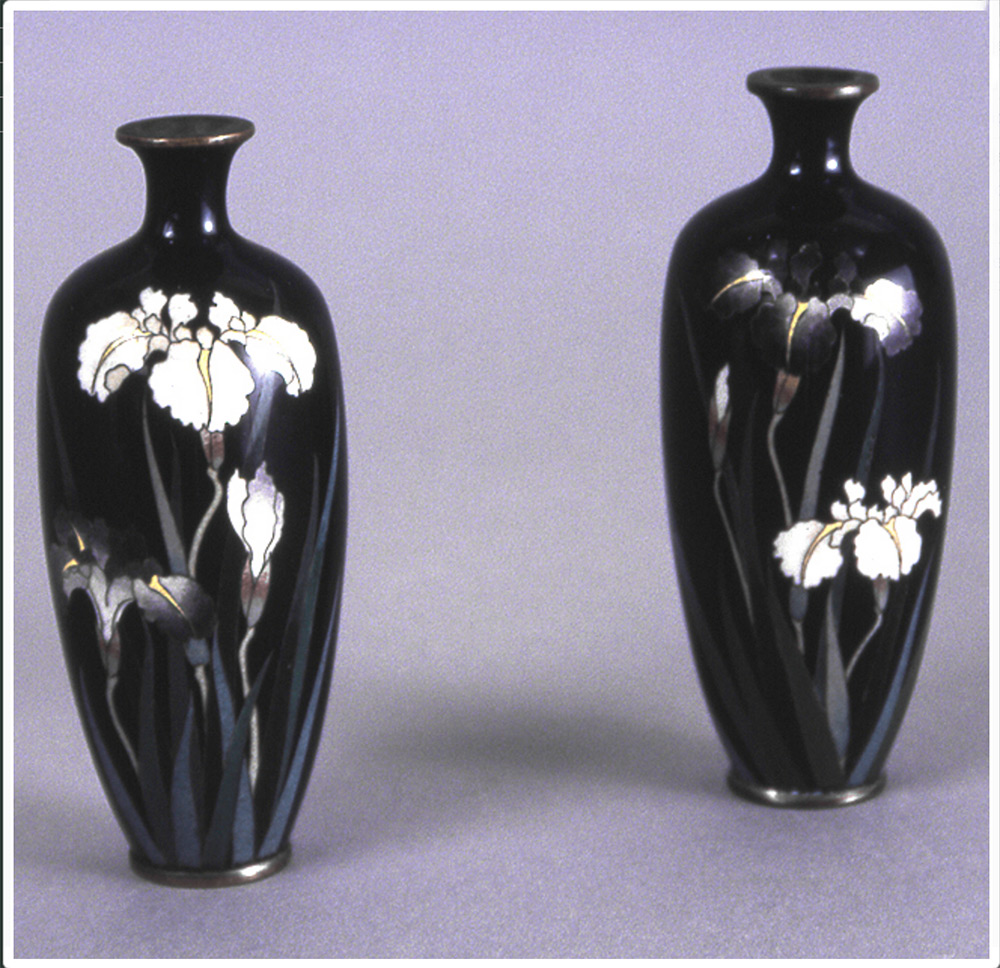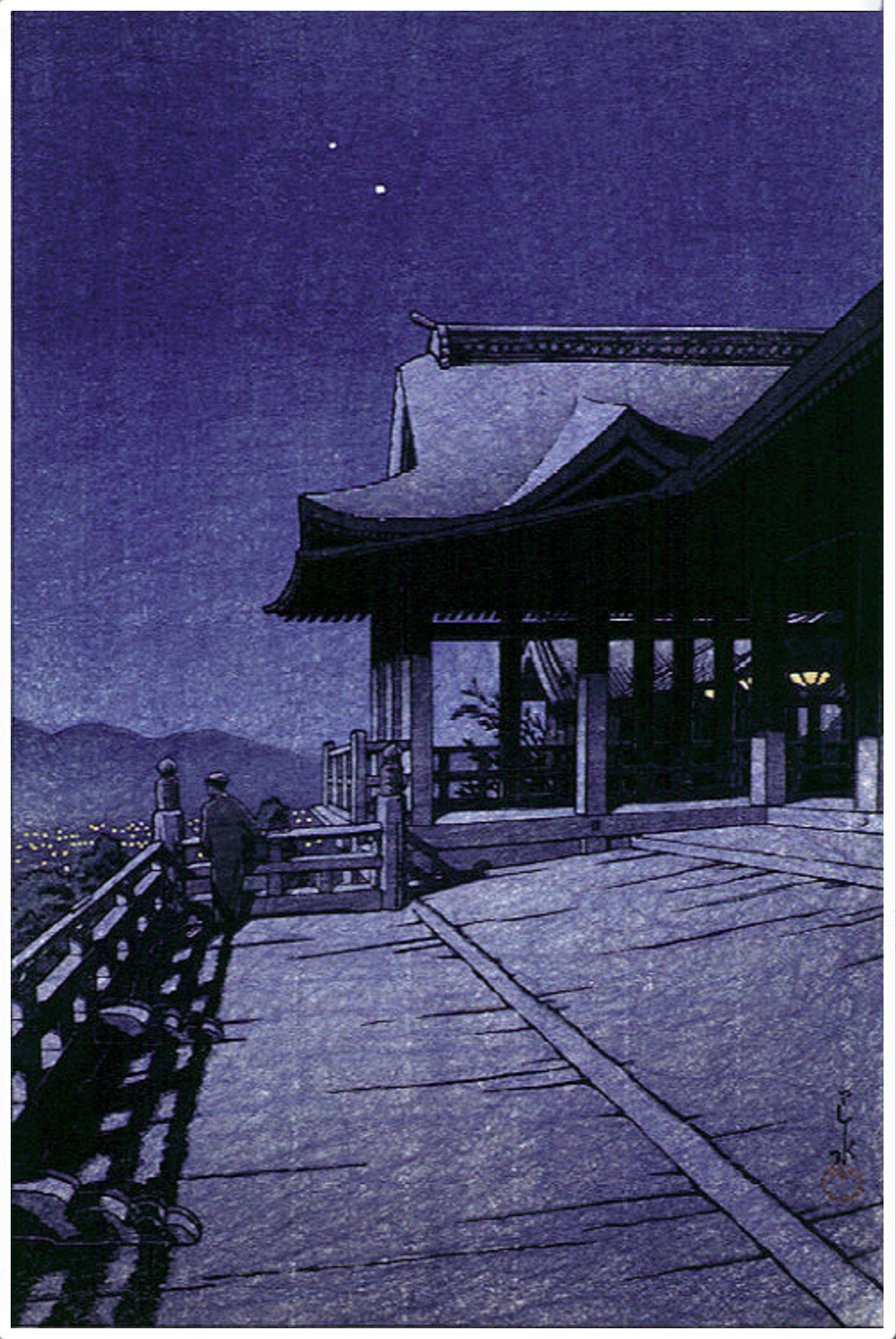
Since joining Scripps as Gabrielle Jungels-Winkler Curator of Academic Programs and Collections, Meher McArthur has been serving up 15-minute talks on a single work of art from the College’s permanent collection in her “Quick Bite of Art” lunchtime series of object-based talks. “Even though we are all at home now, we can still get to know the artwork in the Scripps collection,” says McArthur. “I am enjoying getting to know the College’s extraordinary art collection and sharing it with our community. Thanks to generous donors over the decades, we have a veritable treasure house of art from around the world that we can learn from and use to better understand the complex world we live in.”
Now hosting the series as a virtual experience, McArthur, an Asian art historian by training, shares three of her favorite pieces from the Scripps collection at the Ruth Chandler Williamson Gallery. “These works are not only visually rich and beautiful, but they also express deep human emotions—the joy of our promotions and graduations, nostalgia for those people and places we leave behind, and the serenity we experience in our spiritual sanctuaries,” she says.

Painting of a Heron and Lotus
Artist unknown
Ink and colors on silk, mounted as a hanging scroll
China, nineteenth century
PE333
Chinese bird and flower paintings, or huaniao, celebrate the details of nature. As with Chinese landscape paintings, the choice of motifs depicted is often highly symbolic. Many of these natural phenomena have qualities that give them symbolic value, like the long life of cranes or the flexibility of bamboo. Some creatures and plants gain their symbolism because their names sound like auspicious words. For example, koi carp are considered lucky because the Chinese word for fish, yú, is a homophone for yú, meaning abundance. This type of visual pun, or rebus, is used widely in Chinese art, and it creates a kind of symbolism only understandable by someone familiar with the language. On one level, this elegant Chinese painting of a heron and lotuses celebrates the abundant beauty of summer, when lotuses are in full bloom and heron can find plenty of fish to eat. In addition, the lotus can represent fertility because of its many seeds and purity because of its association with Buddhism, while the heron can represent a pure and patient mind. However, the true symbolism in this painting is in the rebus associated with the pairing of these two natural motifs. In a painting, the heron, lù, symbolizes a path or way as it sounds the same as lù meaning “way, method, or path.” When paired with a lotus, this enhances the sense of progression as lián (lotus) sounds the same as lián (successive), culminating in the phrase lù lián sheng—“May you follow a path of continuing promotion.” It is likely that this painting was commissioned as a gift for a friend or family member’s promotion. This is a fitting message for all the students who have completed one phase of their education and are moving onto another in this uncertain time.

Pair of Japanese Cloisonné Vases with Irises
Artist unknown
Cloisonné enamels on brass
Japan, early-twentieth century
2002.9.59 a, b
In Japan, the iris reigns supreme over the month of May as a symbol of early summer, manhood (because of its sword-like form), and nostalgia for something lost. An episode in The Tales of Ise (Ise Monogatari), an eighth-century collection of poems, tells of the poet courtier, Ariwara no Narihira, who had been banished from the capital, Kyoto, after a failed love affair. He stopped at a place called Yatsuhashi (“Eight Bridges”) and was struck by the beauty of its blooming irises, or kakitsubata. He composed a poem, starting each line with each of the five syllables of ka-ki-tsu-ba-ta:
Karagoromo
kitsutsu narenishi
tsuma shi areba
harubaru kinuru
tabi o shi zo omou
This Chinese robe,
as well worn and familiar
as my dear wife,
I journey farther from home,
and sadness fills my thoughts.
Irises feature prominently in Japanese art, including in paintings, textiles, lacquerwares, ceramics, and cloisonné enamelware, as in this pair of small vases dating to the early-twentieth century from the Scripps College collection. In this complex decorative technique, slender metal wires are attached to a bronze or copper vessel to form enclosures, or “cloisons,” which form the outlines of patterns, sometimes geometric but often floral. The enclosures are filled with colored powdered enamels and then fired to melt the enamels into a glass-like finish. The Japanese probably began making cloisonné enamels, or shippō, in Japanese, in the late seventeenth or early eighteenth century, and by the end of the nineteenth century, this style of decorative metalwork was one of Japan’s most admired art forms for export to the West. This pair is just over four inches in height, but they feature the exceptional craftsmanship of this period. The contrast between the deep black ground and the white of the iris flowers is particularly striking, suggesting that we are viewing these elegant flowers by the light of the moon.

Woodblock Print of Kiyomizu Temple, Kyoto
Kawase Hasui (1883-1957)
Full-color woodblock print on paper
Japan, 1933
54.1.80
This woodblock print from the Scripps College collection by Kawase Hasui (1883–1957) of Kiyomizu Temple in Kyoto presents a deeply soothing portrait of an ancient temple in the gentle evening moonlight. Situated in the Eastern Hills of Kyoto, this Buddhist temple is famous for its tall pagoda, massive main hall, and 13-meter high veranda that looks like a large wooden stage jutting out of the hillside. Over the centuries, this legendary temple has been associated with fire, tragedy, and drama, and its historical, religious, and architectural importance has drawn large crowds of pilgrims and tourists. However, rather than focus on the temple’s famous veranda with its complex structure of pillars and beams that support its weight, or any of the dramatic and bloody stories told about the site, Hasui depicts the upper section of the veranda, now empty of the crowds of pilgrims and travelers. A lone, unidentified figure stands at one corner of the railing gazing out across the hillside toward the city below. Its many windows are lit with oil or gas lamps that shimmer in the distance like tiny stars. Above, we see two actual stars alone in the deep indigo night sky, and we can almost hear the hum of the cicadas in the warm evening air. At a time of such uncertainty and unrest, such images of peace, tranquility and reflection can help calm the soul.

